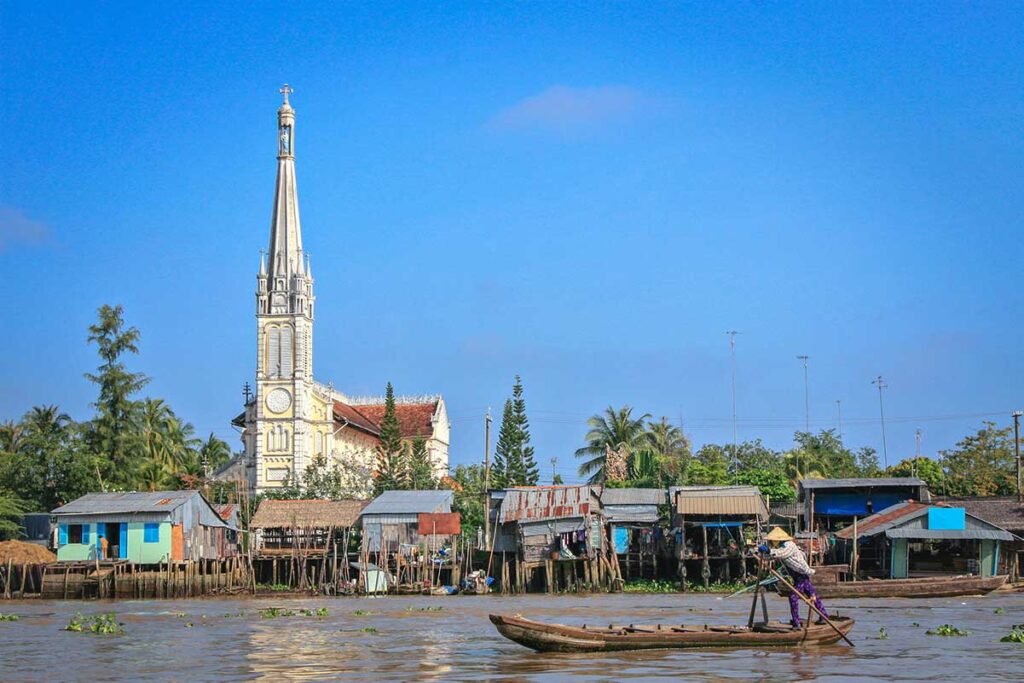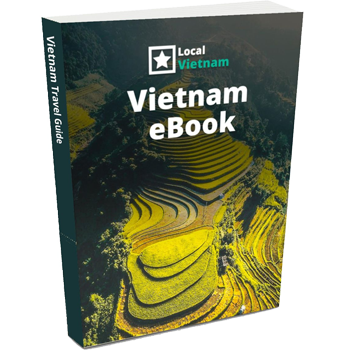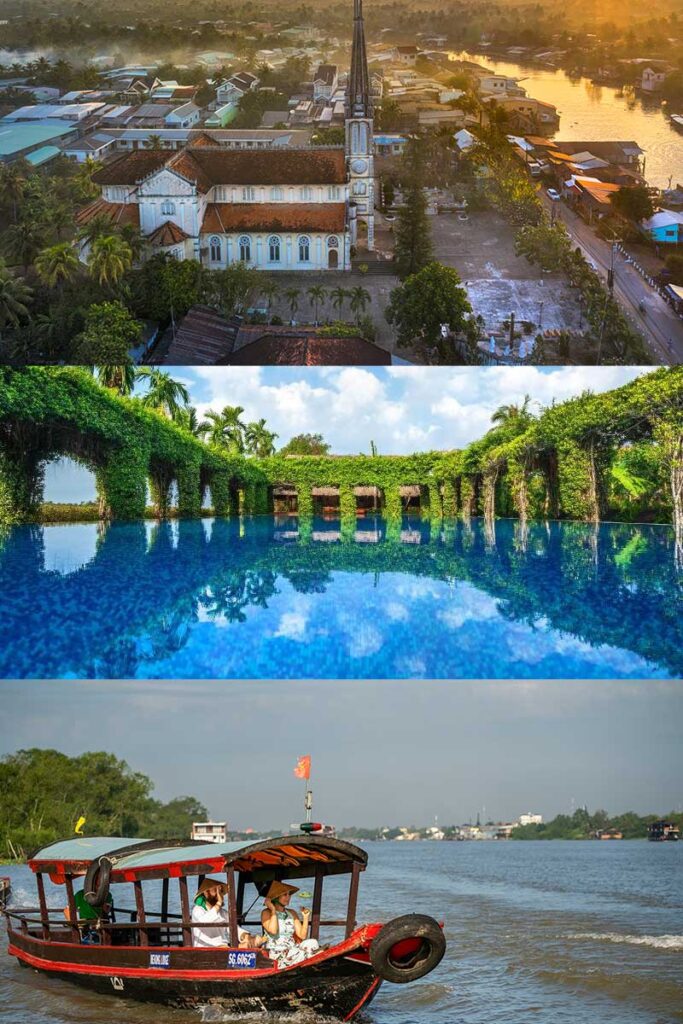Cai Be – Riverside town of the Mekong Delta
Cai Be is a riverside town and rural district in Tien Giang Province, about two hours from Ho Chi Minh City by road. It lies on the Tien River, one of the Mekong’s main branches, and has long been known for fruit farming, small-scale fishing, and cottage industries. The Catholic church by the river and several preserved ancient houses reflect the area’s history as a trading hub during the French colonial era.
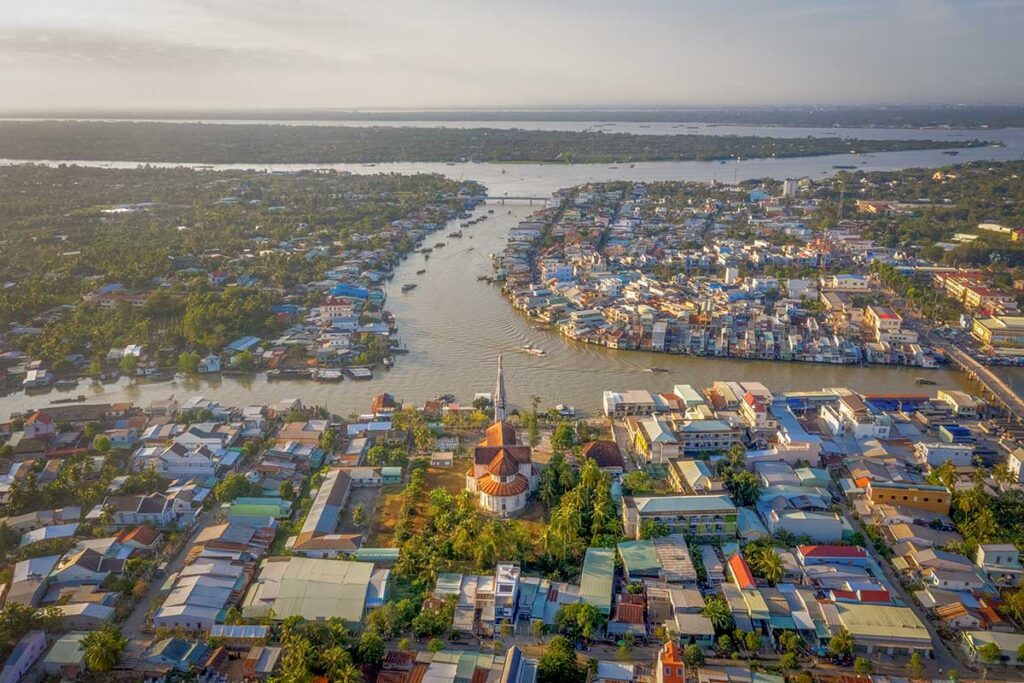
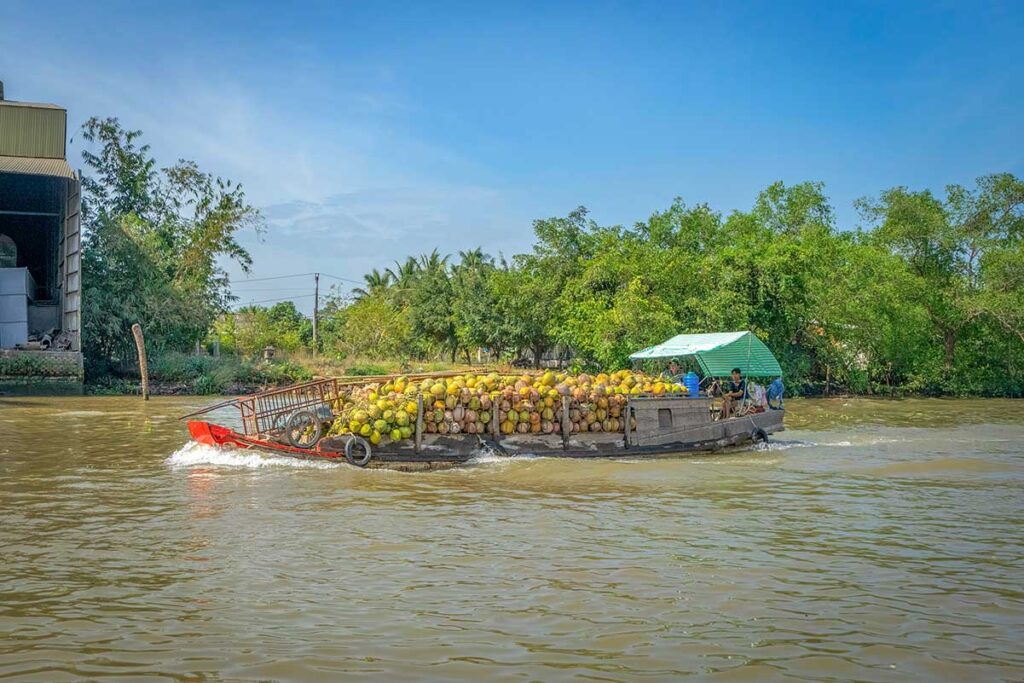
Daily life in Cai Be still revolves around orchards, markets, and boat traffic on the canals. Most visitors come not for major landmarks but to experience this slower pace of the Mekong Delta—cycling through villages, staying in homestays, and joining boat rides on shaded waterways. It’s a destination better suited to travelers looking for a laid-back introduction to delta life rather than a packed sightseeing itinerary.
Mekong Lodge Local Experience in Cai Be
- Experience: Riverside bungalow stay with cycling, sampan boat ride, and cooking class.
- Highlights: Cai Be boat tour and local handicraft workshops included.
Best things to do in Cai Be
Cai Be is not packed with big landmarks, but that’s also its charm. What you find here is the everyday rhythm of the Mekong Delta—boats on the river, quiet lanes for cycling, family workshops, and fruit orchards. It’s a place where staying overnight in a homestay and moving at a slower pace feels more rewarding than ticking off sights.
1. Visit Cai Be Floating Market
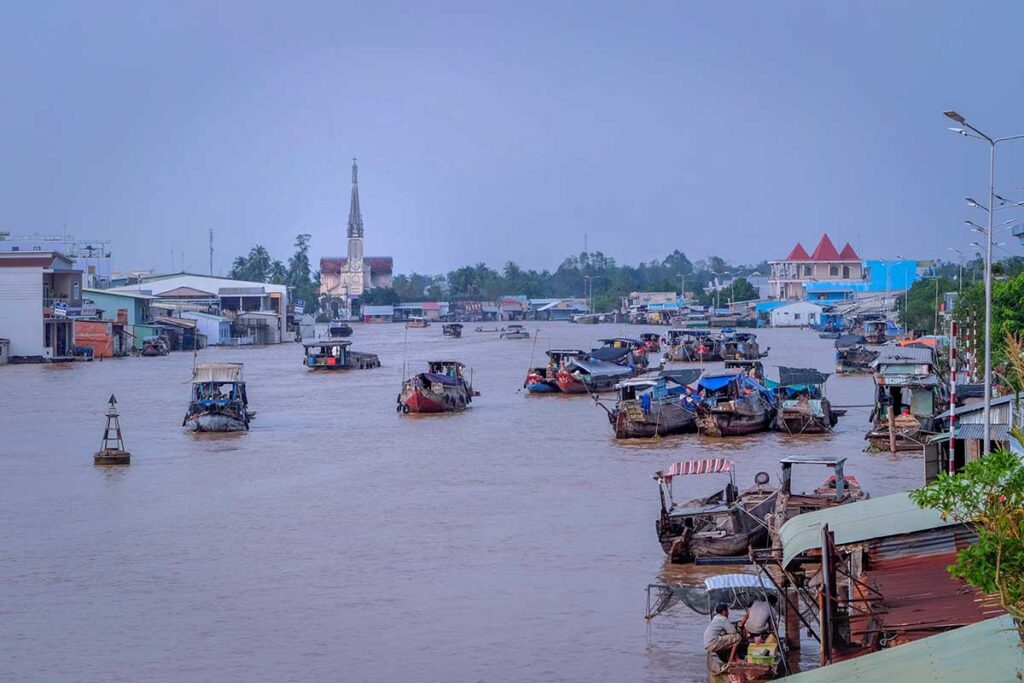
Cai Be Floating Market was once one of the busiest trading spots in the delta, with hundreds of boats selling fruit and produce straight from the orchards. It stretched across the Tien River, and the Catholic church in the background made it one of the most photographed floating markets in Vietnam.
Today, only a small handful of boats remain. The market is quiet and mostly caters to local wholesale buyers rather than tourists. If you expect the lively scenes of old photos, you will be disappointed. Still, it can be part of a broader boat trip—grabbing a coffee or a bowl of pho from a floating kitchen while passing through gives you a small taste of river life.
2. Boat & Sampan rides through canals
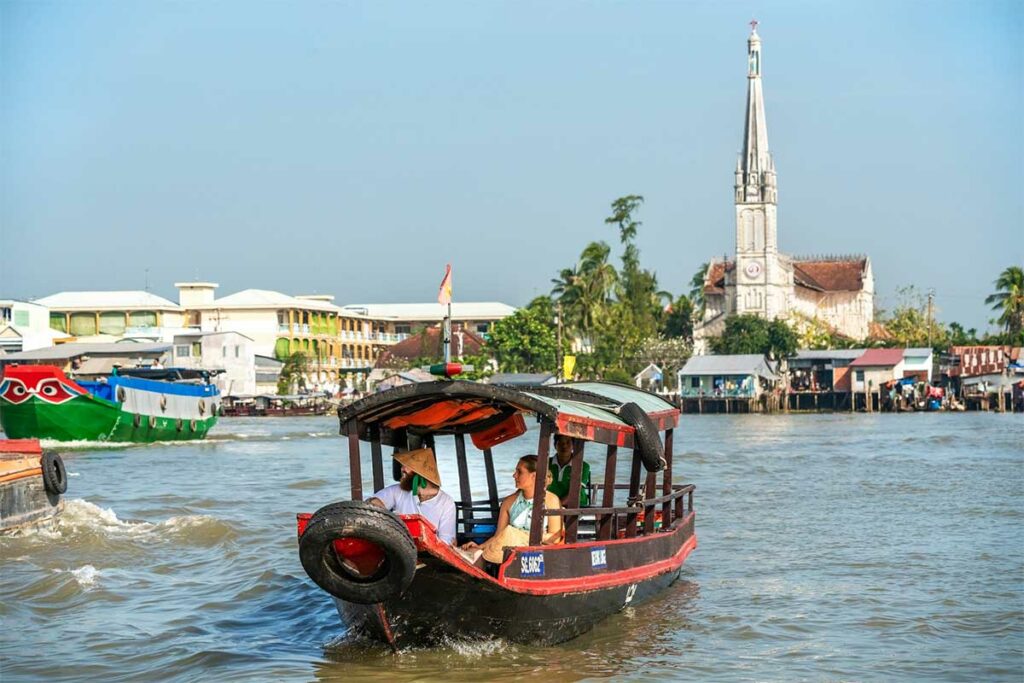
The best way to see Cai Be is by water. Larger motorboats take you along the main river and to nearby islands, while smaller sampans row you into shaded back canals lined with nipa palms.

These quiet channels are where you’ll see daily life up close: fishermen tending nets, kids swimming, and families washing vegetables at the water’s edge. It’s slow and simple, but very atmospheric.
3. Cycling through villages, orchards & rural backroads
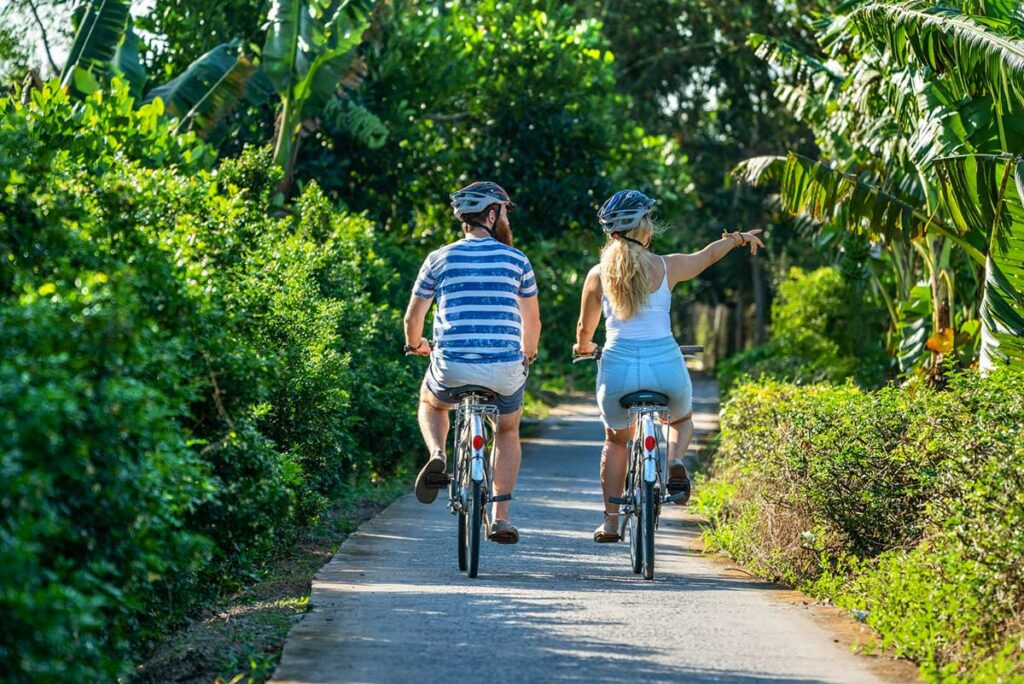
Cai Be’s flat, narrow roads make cycling easy and enjoyable. You can ride through fruit orchards, cross small wooden bridges, and stop at roadside cafés where locals relax in hammocks. Traffic is minimal, so it’s much less stressful than cycling in Vietnamese cities. Most homestays provide bicycles, though they’re usually basic—good enough for a few hours exploring.
4. Cai Be Church – Iconic riverside landmark
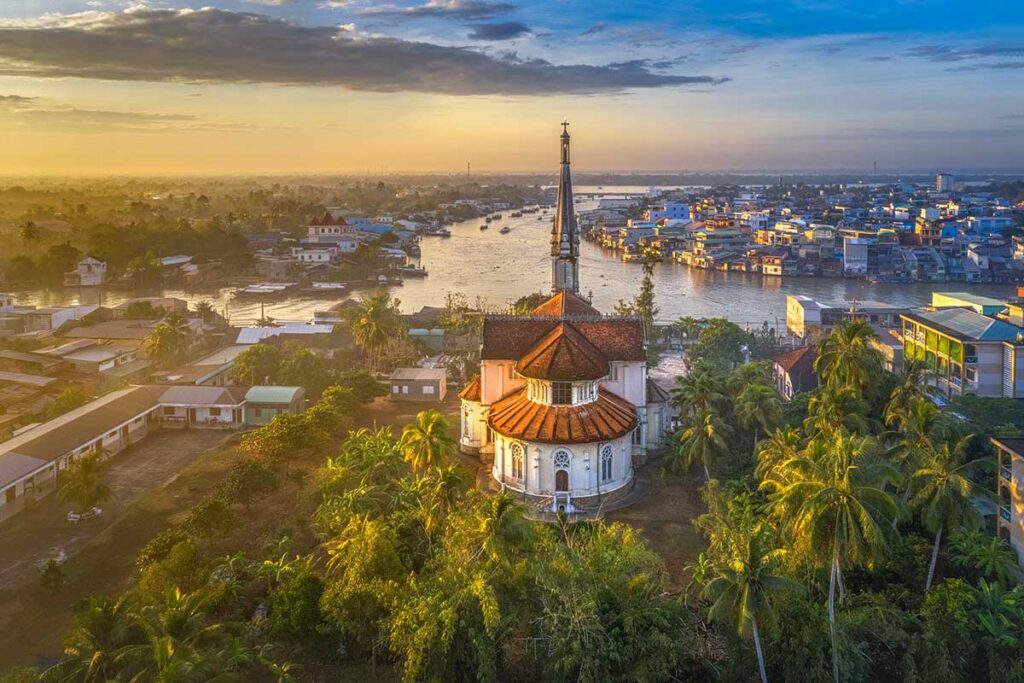
The French-built Cai Be Church is one of the most recognizable sights in town, especially from the water. Its tall bell tower rises above the riverbank and often appears in photos of the floating market. Inside it’s fairly simple, but from the outside it’s a reminder of Cai Be’s role as a colonial-era trading hub. It’s worth a quick stop if you’re nearby, but more of a landmark to look out for during boat trips.
5. Explore local workshops
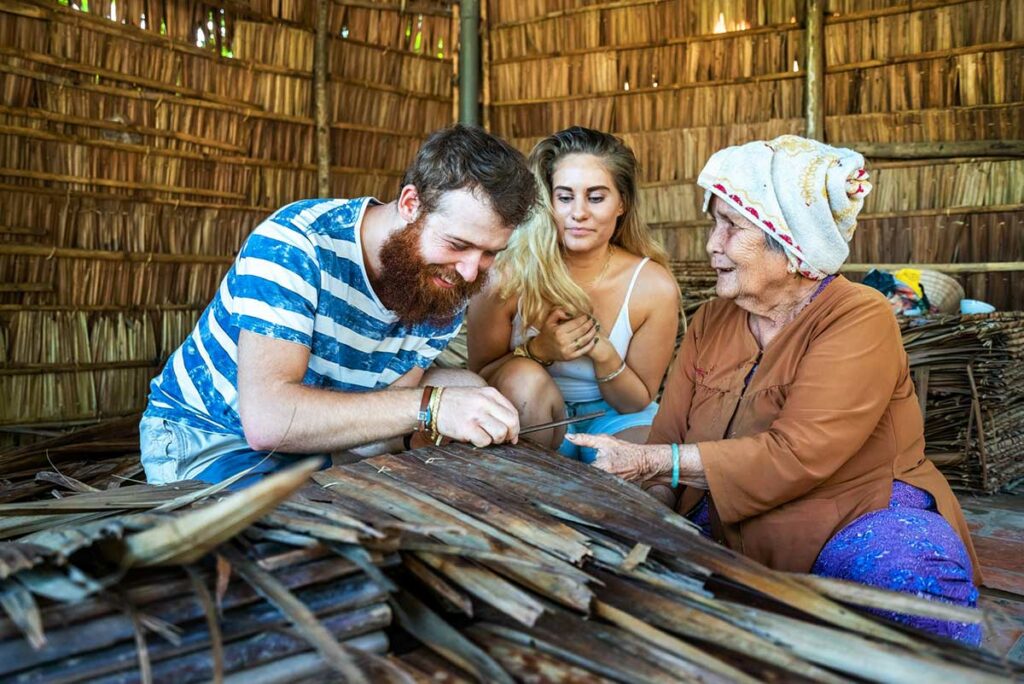
Cai Be is home to small family workshops that have been producing local specialties for generations. You can see how rice paper is dried on bamboo racks, taste freshly made coconut candy, or watch the noisy process of puffing rice into crunchy snacks. These visits are often included in boat tours, and while a bit touristy, they still give insight into the cottage industries that keep the delta running.
6. Visit fruit orchards & Farms
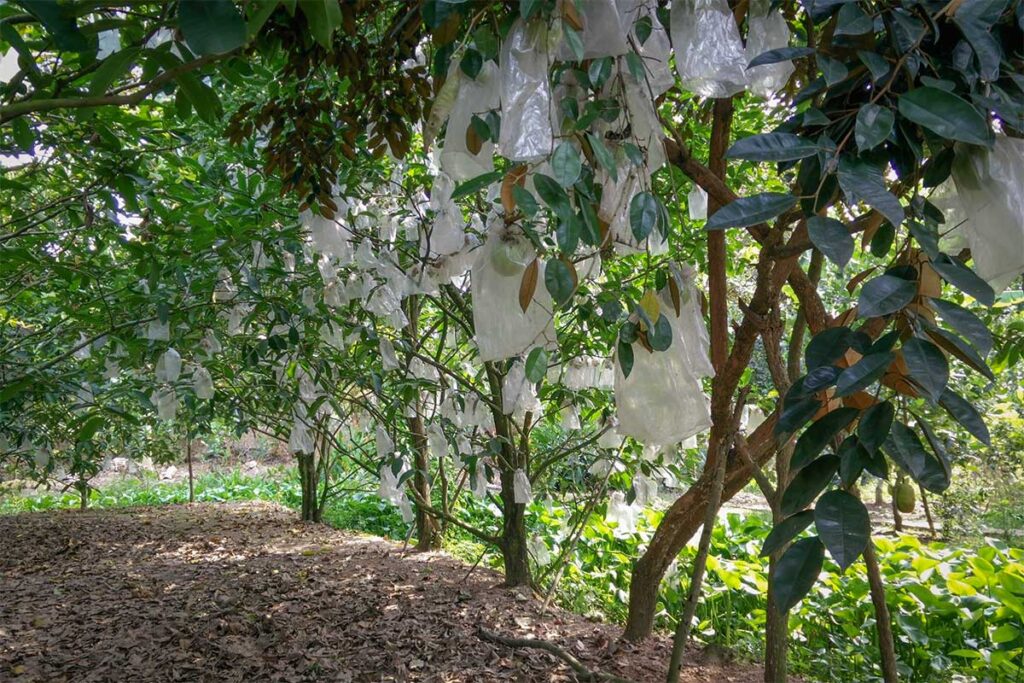
This area is famous for its fruit, with jackfruit, rambutan, mango, and longan trees growing in abundance. Many orchards open their gardens to visitors, offering the chance to walk among the trees and taste fruit straight from the farm. Depending on the season, you might be able to pick your own. It’s a simple activity, but a nice way to connect with the agricultural side of Cai Be.
7. Cai Be Market (Land Market)
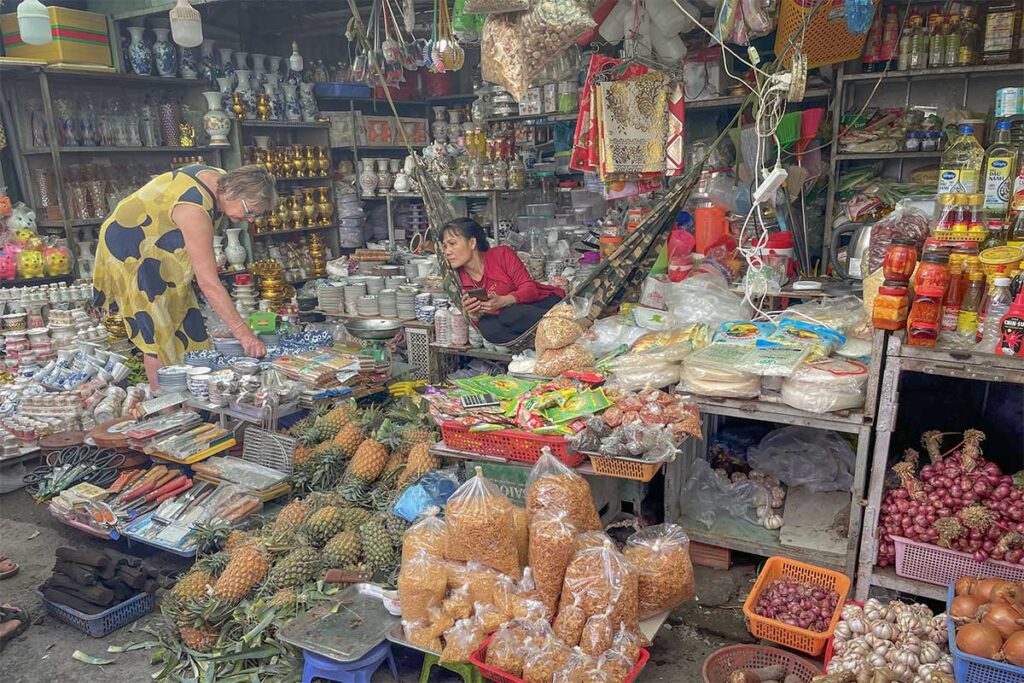
Away from the river, Cai Be’s main market on land is where locals buy fruit, vegetables, and household goods. It’s not a sightseeing highlight, but walking through gives you a clear picture of daily life in the delta. Stalls are piled high with seasonal fruit, herbs, and fresh fish, and it’s a good chance to see what the region is known for before it ends up on boats or in city markets.
8. Ancient Houses – Ba Duc & Ba Kiet
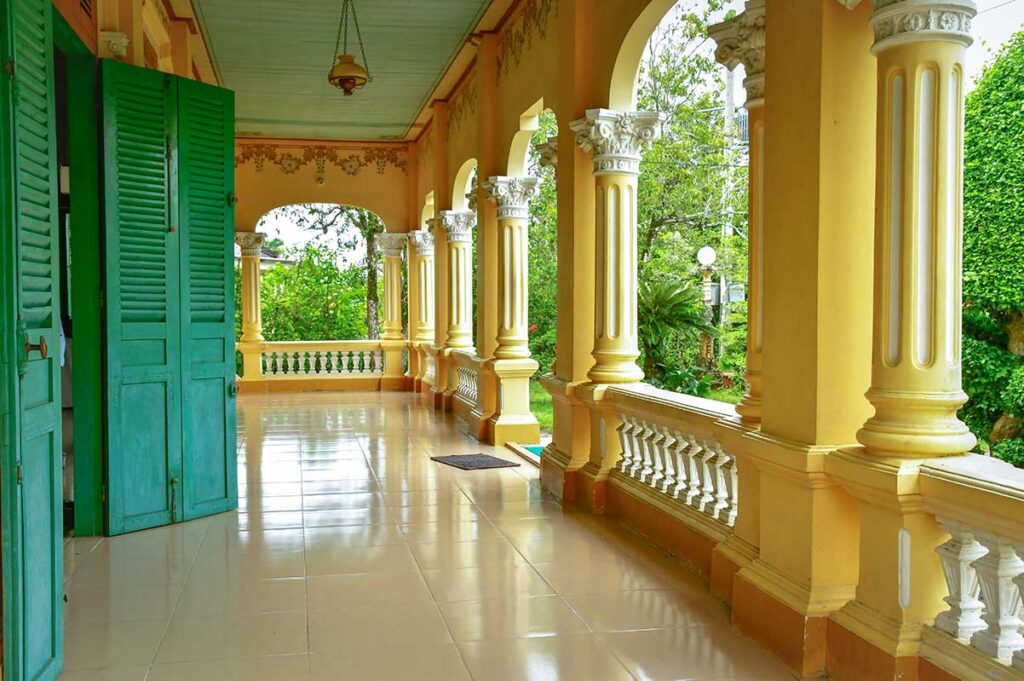
Cai Be has a couple of preserved merchant houses that reflect the wealth of trading families from the 19th century. Ba Duc Ancient House blends French and Vietnamese design, with antique furniture and a riverside garden.
Ba Kiet House is even older, dating back to 1838, and today doubles as a place where you can have a traditional Mekong meal. Neither is a “must-see,” but together they add a layer of history to a trip that’s otherwise focused on rural life.
9. Stay overnight at a homestay or lodge
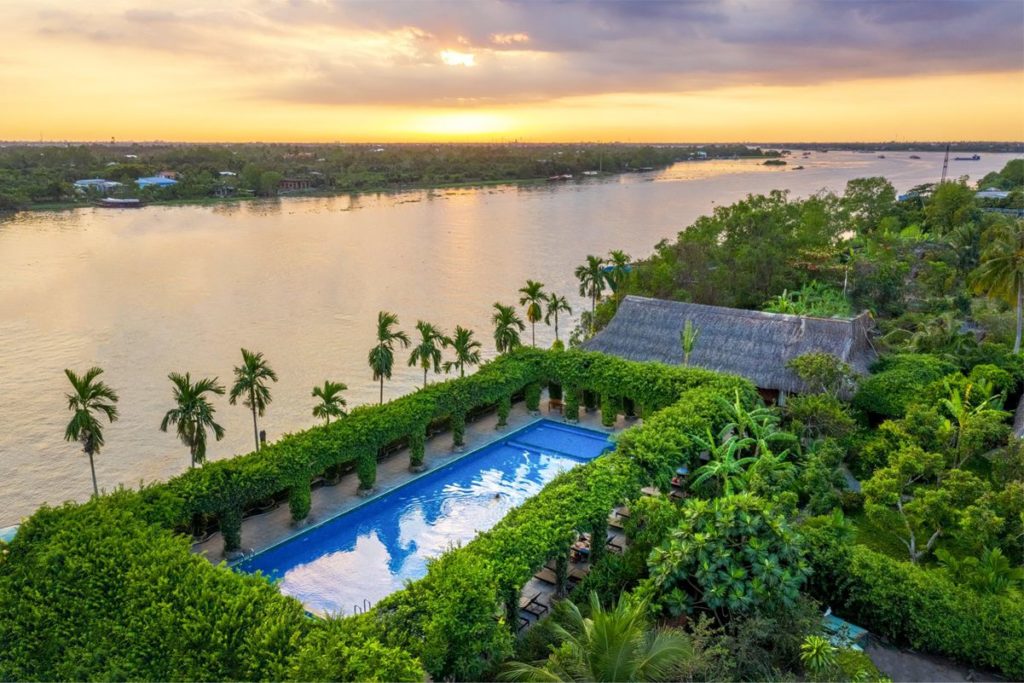
Spending a night in Cai Be is one of the best ways to experience the town. Homestays and small lodges are surrounded by orchards or set right by the river, and they usually include home-cooked meals. Popular options include Mekong Lodge, Mekong Rustic, and smaller family-run places where you can borrow a bike, join a cooking class, or simply relax in a hammock. Staying overnight gives you more time to explore the canals and enjoy the slower pace without rushing back to Ho Chi Minh City.
10. Try local food
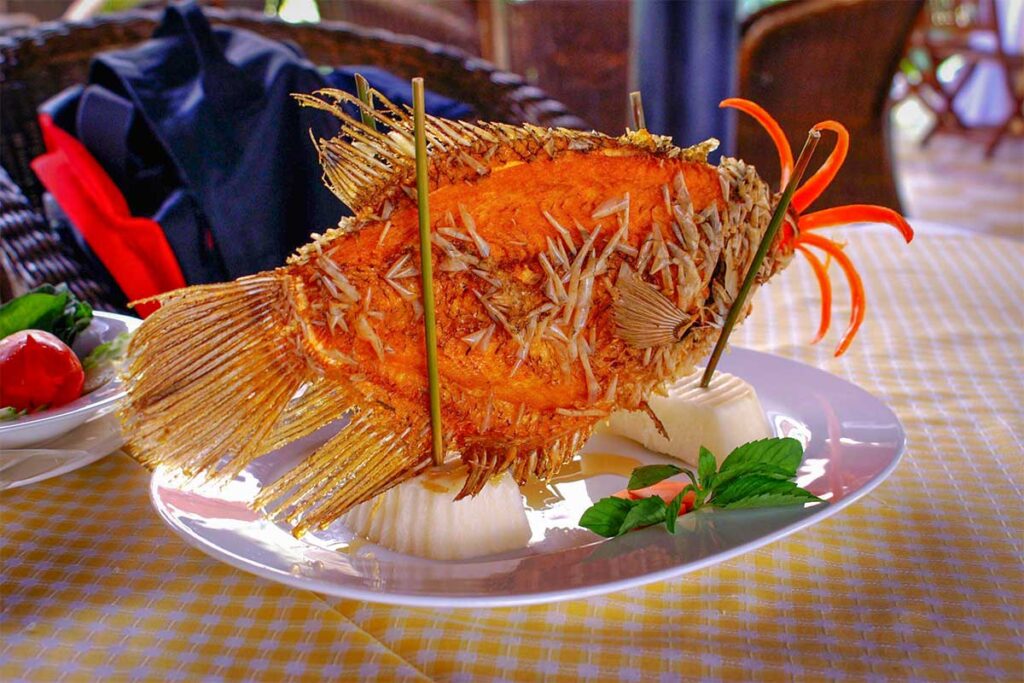
Cai Be’s food reflects the abundance of the delta. The most famous dish is elephant ear fish, deep-fried and served upright at the table, with the meat rolled into rice paper with herbs and noodles. Fresh fruit is another highlight, often picked directly from nearby orchards. Meals at homestays usually showcase these local specialties, and while you won’t find a big dining scene, you’ll eat well if you enjoy rustic Mekong flavors.
11. Kayaking or SUP in Quiet Canals
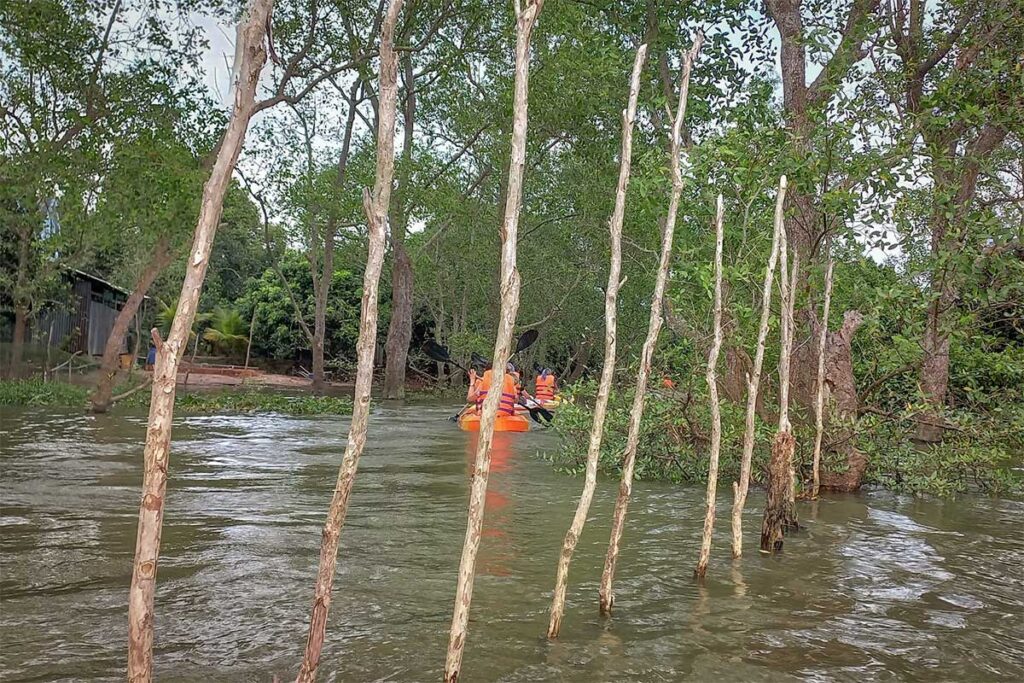
Some homestays around Cai Be offer kayaks or stand-up paddleboards for exploring the smaller canals. It’s a peaceful alternative to motorboat tours and gives you the freedom to paddle at your own pace. Just keep in mind that the waterways can be confusing, so it’s better to go with a guide if you’re not familiar with the area.
12. Experience Don Ca Tai Tu Folk Music
Don Ca Tai Tu is a traditional form of folk music from the Mekong Delta, mixing singing, theatre, and simple instruments. In Cai Be, you can sometimes hear it performed during dinner at homestays or restaurants. Even if you don’t understand the words, the expressive style makes it easy to enjoy. It’s not a guaranteed experience, but if you have the chance to listen, it adds cultural depth to your visit.
How to get to Cai Be
General location
Cai Be is in Tien Giang Province, roughly 100 km southwest of Ho Chi Minh City. Thanks to the modern expressway, the journey by road takes around two hours. The town lies on the Tien River, making it easy to combine with nearby Mekong Delta destinations like Vinh Long or Ben Tre.
By bus & Limousine van from Ho Chi Minh City
The cheapest and most straightforward way to reach Cai Be is by bus. Local companies such as Hai Duyen run frequent services from District 5 in Ho Chi Minh City, with tickets costing from about 100,000–150,000 VND (4–6 USD). The trip takes around 2.5 hours, and buses usually drop passengers off in central Cai Be.
If you prefer more comfort, limousine vans are another option. They have wider seats, air-conditioning, and often pick up passengers at central locations in Ho Chi Minh City. Prices are higher—around 200,000–350,000 VND (8–13 USD)—but many travelers find the ride more comfortable than the standard bus.
Buses from other cities
Cai Be is relatively small, so direct bus services from other Mekong Delta cities are limited. You may find local buses from Can Tho, but they can be harder to navigate without Vietnamese language skills. From most other places in southern Vietnam, you’ll likely need to travel via Ho Chi Minh City first and then continue to Cai Be.
Private car with driver
Hiring a private car with a driver is the most convenient option, especially if you’re traveling as a family or group. The ride from Ho Chi Minh City takes two hours, and you can combine it with sightseeing stops in My Tho or Ben Tre along the way. Costs depend on the itinerary and type of vehicle, but expect around 1,500,000–2,000,000 VND (60–80 USD) for a day trip.
Motorbike
Riding your own motorbike to Cai Be is possible, but you cannot use the expressway. The alternative routes take longer and require confidence in Vietnamese traffic. For most foreign travelers, it’s easier to take a bus or car to Cai Be and then rent a motorbike locally for exploring the countryside.
How to get around Cai Be
Boat tours
There’s no public boat service in Cai Be, so if you want to explore the river and canals you’ll need to arrange a private boat. The easiest way is through your homestay or lodge, as they can organize a boat to pick you up nearby and help confirm the itinerary in advance. You can also go directly to the tourist pier in town, but bargaining may be required and English is limited.
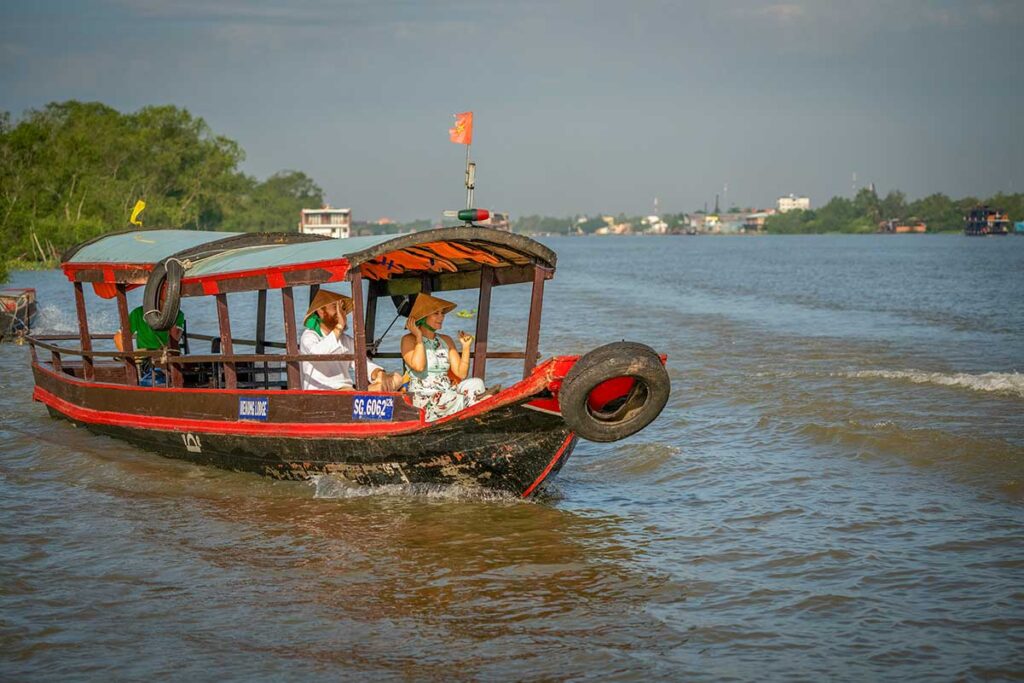
Cycling
Cycling is one of the highlights of Cai Be. The flat, quiet roads are perfect for exploring orchards, small temples, and local villages at a relaxed pace. Most accommodations provide free bicycles, though they’re often basic in quality—fine for a few hours of casual riding. Guided cycling tours are another option if you want someone to show you hidden paths and introduce you to families running workshops along the way.
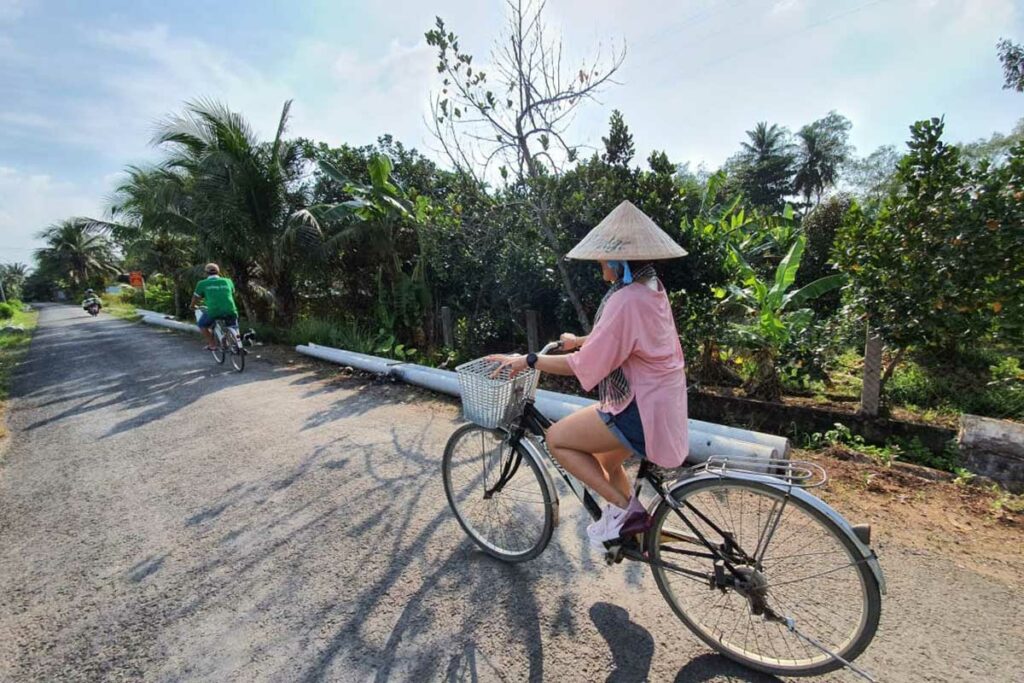
Scooter/Motorbike
Renting a scooter gives you more freedom to cover ground quickly, and traffic here is light compared to big cities. That said, it’s best for travelers with experience riding in Vietnam and ideally a valid license. Many tourists ride without, but accidents can be costly. If you’re comfortable, it’s a fun way to reach nearby villages or ferry crossings on your own schedule.
Car with driver
Within Cai Be itself, a car is not very practical, as most of the appeal lies in the narrow roads and waterways. However, if you want to make longer trips to reserves or other towns in the Mekong Delta, hiring a car with a driver can be useful. Prices are usually fixed for a day or itinerary rather than by the meter, and drivers wait for you at each stop.
Practical visitor information & Tips
Best time to visit
Cai Be can be visited year-round, but the experience varies with the seasons. The dry season (November–April) offers plenty of sunshine, good for cycling and boat trips, though it can be hot by midday. The rainy season (May–October) brings short but heavy showers, often in the afternoon; mornings are usually clear, and the countryside looks especially green. The so-called floating season (September–December) coincides with higher water levels and is considered the most scenic time to see the delta’s waterways.
Where to stay
Accommodation in Cai Be is small-scale, leaning more toward homestays and eco-lodges than hotels. Homestays offer simple but comfortable rooms, mosquito nets, and family-style meals, while lodges such as Mekong Lodge provide more comfort, with private bungalows and pools. Don’t expect luxury; the appeal here is in peaceful surroundings, fresh food, and direct access to cycling paths or boat trips. Staying overnight is the best way to feel the slower pace of the delta.
What to bring
Pack light and practical. Mosquito repellent is useful, especially if you’re staying overnight in a homestay. Bring sun protection (hat, sunglasses, sunscreen) and a raincoat or poncho if traveling in the wet season. Cash is important: while there are ATMs in Cai Be town, smaller restaurants, markets, and homestays often don’t accept cards. If you’re only staying one night, you might consider leaving big luggage in Ho Chi Minh City and just bringing an overnight bag.
Eating & Drinking
Food in Cai Be is simple but fresh, often prepared with ingredients from nearby orchards and farms. The local specialty is elephant ear fish, served fried and rolled into rice paper with herbs and noodles. Meals at homestays usually include tropical fruits, vegetable dishes, and Mekong-style soups. There are small riverside cafés where you can relax with a coffee or a beer, but don’t expect much in the way of nightlife—the atmosphere here is quiet after dark.
How much time do you need?
A day trip from Ho Chi Minh City gives you a glimpse of Cai Be’s canals and villages, but it can feel rushed. Spending two days with one night in a homestay or lodge is far more rewarding, as you get to enjoy the evening calm, see more of the countryside, and experience local hospitality.
Where to fo next
From Cai Be you can either return to Ho Chi Minh City in about two hours, or continue deeper into the Mekong Delta. The region is well-connected by road and river, so it’s easy to link Cai Be with other towns and experiences. A few ideas:
- Can Tho – The largest city in the Mekong Delta and home to Cai Rang Floating Market, still one of the most active in Vietnam.
- Ben Tre – Known for its coconut groves and quiet countryside, with boat and cycling trips similar in pace to Cai Be.
- Chau Doc – Near the Cambodian border, offering colorful temples, Cham villages, and a climb up Sam Mountain for panoramic views.
- Phu Quoc Island – Reachable via ferry from Ha Tien or Rach Gia, ideal if you want to end your delta trip with a few days on the beach.
Is Cai Be worth visiting?
Cai Be is worth considering if you’re looking for a laid-back slice of the Mekong Delta close to Ho Chi Minh City. The town doesn’t have dramatic temples, big museums, or a lively floating market anymore, so if those are your priorities you may be disappointed.
What Cai Be does offer is a slower rhythm: boat trips on shaded canals, cycling through orchards, and overnight stays in small homestays or eco-lodges. Compared with more developed towns like Can Tho, it feels quieter and more rural, which can be exactly what some travelers are after. If you want an easy introduction to delta life without long travel times, Cai Be is a pleasant choice.
